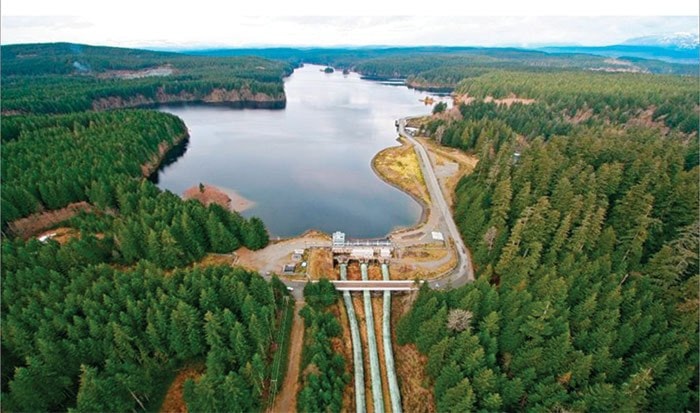Lightning strikes last Thursday near the John Hart hydroelectric facility caused an unplanned river flow reduction in the Campbell River.
As a result, some fish were killed while others were displaced but returned to the river alive.
Spokesperson Stephen Watson said BC Hydro immediately responded to recover river flows and by going out to key areas of the river to determine potential fish habitat impacts.
“Government fish agencies were notified within 10-15 minutes after the event began,” Watson said in a report released to the media. “The City of Campbell River was also notified as their domestic water supply is pulled off the three penstocks; there were no water withdrawal implications from this event for the city.”
A lightning strike is one of the worst case scenarios for BC Hydro to deal with given the existing configuration of the 68-year-old John Hart facilities.
Watson said that such close vicinity electrical static causes protection control measures to initiate and can lead to multiple intake gate closures at the John Hart dam. In this case, intake gates that pass water from the John Hart reservoir down two of the three penstocks closed, prohibiting water flow to the generating station.
“This resulted in four of the six turbines and generators going off-line,” Watson said. “About 95 per cent of the downstream Campbell River flow comes out of the generating station.
“At about 4:30 p.m., from the storm activity, water flows downstream of the generating station went from about 96 cubic metres per second (m3/s) to about 32 m3/s. The Campbell River riverbed is fully covered with water at a flow rate of 80 m3/s.”
The two operating turbines were increased to full capacity in about 10 minutes to provide a river flow of about 46 m3/s. At the same time, a decision was made to re-open the penstock intake gates and re-start the turbines versus going to the spillway gates and spilling water down Elk Falls Canyon.
Between about 5:40 and 5:45 p.m., two of the four off-line turbines and generators were returned to service and the total river flow increased to about 69 m3/s; 65 m3/s is one of the key fish habitat thresholds within the river.
Between about 6:10 p.m. and 6:15 p.m., the final two turbines and generators were back on-line and the total river flow increased to about 85 m3/s and above the 80 m3/s flow that fully covers the riverbed.
Watson said BC Hydro staff and its on-call biologists were on the river quickly and focused on the susceptible habitat areas of the river.
“Some fish mortalities were found and fish were also salvaged from isolated pools and returned to the river alive,” Watson said. “A review of the potential impacts to fish could not be fully completed given the recovery of river flows and the high water conditions.
For the fish life cycle, Fisheries and Oceans Canada believe the salmon had moved from the egg to alevin stage, to then become fry, and were out of the gravel. Fisheries and Oceans Canada annually places Chinook incubators within the river, but the fish had been fortunately released into the river prior to this event.”
Protecting downstream fish habitat is one of the three project drivers for the John Hart Generating Station Replacement Project.
The recovery of downstream river flows will go from about an hour or more to seconds once the project is complete in 2018 – this improvement will create a near seamless continuity of river flows for fish habitat, according to Watson.
As part of the project, a water bypass facility is being built within the generating station to quickly divert the water around the turbines if needed and provide the required flows downstream.
BC Hydro has an ongoing community commitment to provide public notice of Campbell River flows that go below 80 m3/s for more than 10 minutes.
BC Hydro will report out on this event, including potential fish impacts, at BC Hydro’s Campbell River community liaison committee in June.
The committee consists of government agencies, local government and stakeholders.
